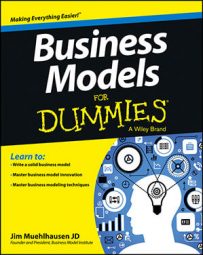The unique value proposition (UVP) extends the concept of the unique selling proposition (USP) to include the benefits derived by the customer. Customers ask themselves, “Are the unique features of this product worth the price?” Customers engage in this features–value weighing for all purchases. Augmenting your USP with a strong value proposition creates customers’ desires to trade their hard-earned dollars for your product.
This model, the Value Proposition Builder, creates six stages for value proposition analysis:
For what market is the value proposition being created?
What does the market value the most — the value experience or the customer experience?
What products are being offered?
What benefits will the customer derive from the product?
What alternative options exist?
What evidence substantiates your value proposition?
Famed business author Neil Rackham believes a value proposition consists of four main parts: capability, impact, proof, and cost.
You could have a strong selling proposition, but a weak value proposition. A Rolls-Royce automobile has a unique selling proposition as the most luxurious, hand-crafted automobile in the world. But for many buyers, the UVP of Rolls-Royce is weak. Is a $262,000 Rolls-Royce Phantom a better value to the high-end car buyer than a top-of-the-line $137,000 BMW 7 Series or a $213,000 Mercedes CL65 AMG?
All these cars have a USP that doesn’t factor cost or perceived customer value. In order to get the full picture, also consider the customer’s weighing of the unique value provided by the product and the financial or opportunity cost to purchase.
The unique selling proposition combined with the unique value proposition shows how marketable the product can be. It isn’t enough to be unique; you must be unique in a way that creates the perception of good value to the customer.
USP + UVP = Marketable Product
Business models with a strong USP and UVP have an excellent foundation. Here are some examples of companies or products in which both USP and UVP are strong:
Cheesecake Factory: Freshly-cooked, creative meals in ample portions, served in an inviting atmosphere, for a reasonable price.
Hyundai: Lots of options for not a lot of money.
Target: Save money but still get cool stuff.
Whole Foods: The groceries may cost a lot, but the value of being healthy outweighs the cost.
Zappos: The world’s largest shoe store delivered to your door with free shipping both ways.
Some of these companies offer higher-priced products than their competitors. However, when customers weigh the benefits versus the value provided, they choose to spend more because the additional perceived value exceeds the additional cost.

